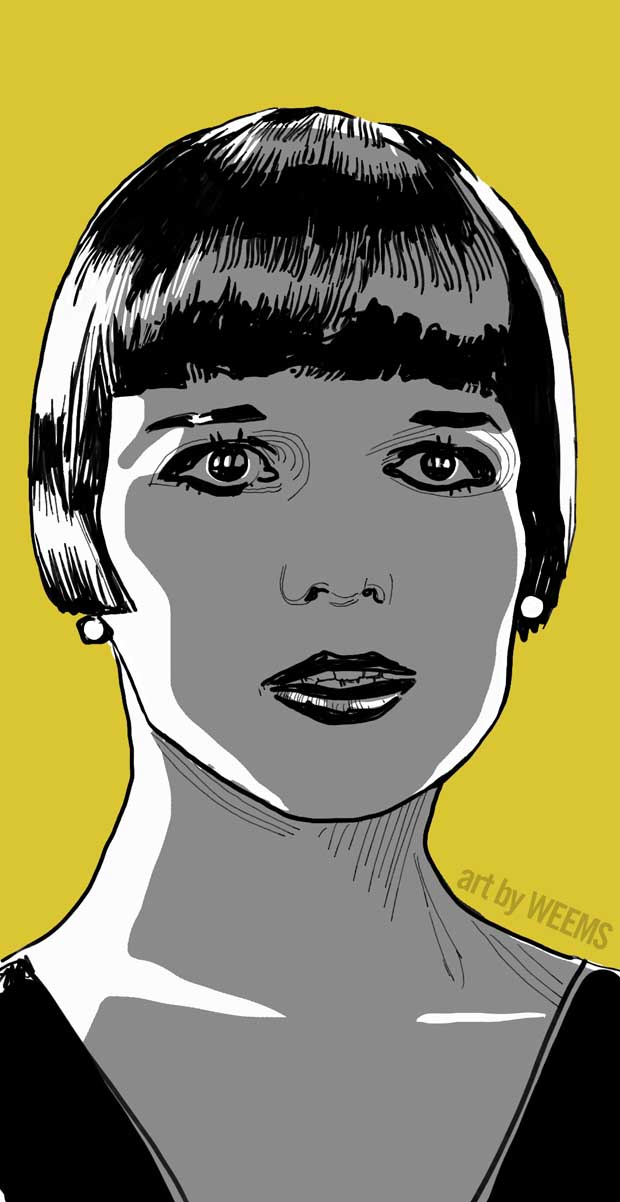Louise Brooks
1906 - 1985
Born in Kansas, her show business career began with dancing for the Denishawn troupe* and the Ziegfeld Follies** before moving to film work, signing with Paramount in the mid-1920s. Her iconic "black bob" haircut made her a kind of visual representative of the Jazz Age "modern girl" and she seemed to specialize in silent film the showing of a kind of cool intelligence mixed with her natural and highly photogenic beauty.
She found it difficult to deal with the emerging Hollywood studio system, which was rapidly consolidating its production methods and simultaneously enlarging producers’ power over all aspects of filmmaking. In response she left for Europe and made her defining works with G. W. Pabst: Pandora’s Box (1929) and Diary of a Lost Girl (1929). These films are now memorialized as presenting a sexual frankness and modernity that presaged the changes in Western society throughout the 20th century.
By the mid-1930s her film work had had become sparse so she slipped into working ordinary jobs and vanished from public view. In the 1950s–60s archivists and critics like Henri Langlois and James Card pioneered a revival of interest in her work as a major artist of the silent era. By then she was living in Rochester, New York, near the George Eastman Museum. At this time she wrote film essays collected as "Lulu in Hollywood" about her time in film-making and considered an important resource for film history, if not also evaluating her own career and why she succeeded and finally could not stay in Hollywood.
Footnotes:
*Denishawn is considered a ground breaking American dance school and company founded by Ruth St. Denis and Ted Shawn in 1915. Originally in Los Angeles and later with branches in New York and elsewhere, it presented lavish concert programs featuring ballet technique with theatrical pageantry. Denishawn is considered an important component of establishing modern dance as a concert art in the U.S.
**The Ziegfeld Follies were Broadway revues produced by Florenz Ziegfeld Jr. from 1907 through the early 1930s, with infrequent revivals later. Derived from the concepts of the French Folies Bergère in Paris, the Follie's featured comic sketches, star singers, specialty dancers. There were also opulent musical numbers with fantastic visuals made from gigantic staircases, reflective, glittering sets, and over-the-top elaborate costumes.
What's Recent
- Island of Desire - 1951
- Road to Morocco
- The Devil and Miss Jones - 1941
- Sinners - 2025
- Something for the Boys - 1944
- The Mark of Zorro - 1940
- The Woman They Almost Lynched - 1953
- The Cat Girl - 1957
- El Vampiro - 1957
- Adventures of Hajji Baba – 1954
- Shanghai Express 1932
- Pandora's Box – 1929
- Diary of A Chambermaid - 1946
- The City Without Jews - 1924
- The Long Haul
- Midnight, 1939
- Hercules Against the Moon Men, 1964
- Send Me No Flowers - 1964
- Raymie - 1964.
- The Hangman 1959
- Kiss Me, Deadly - 1955
- Dracula's Daughter - 1936
- Crossing Delancey - 1988
- The Scavengers – 1959
- Mr. Hobbs Takes A Vacation - 1962
- Jackpot – 2024
- Surf Party - 1964
- Cyclotrode X – 1966
Original Page Dec 16, 2014 | Updated October 15, 2025
